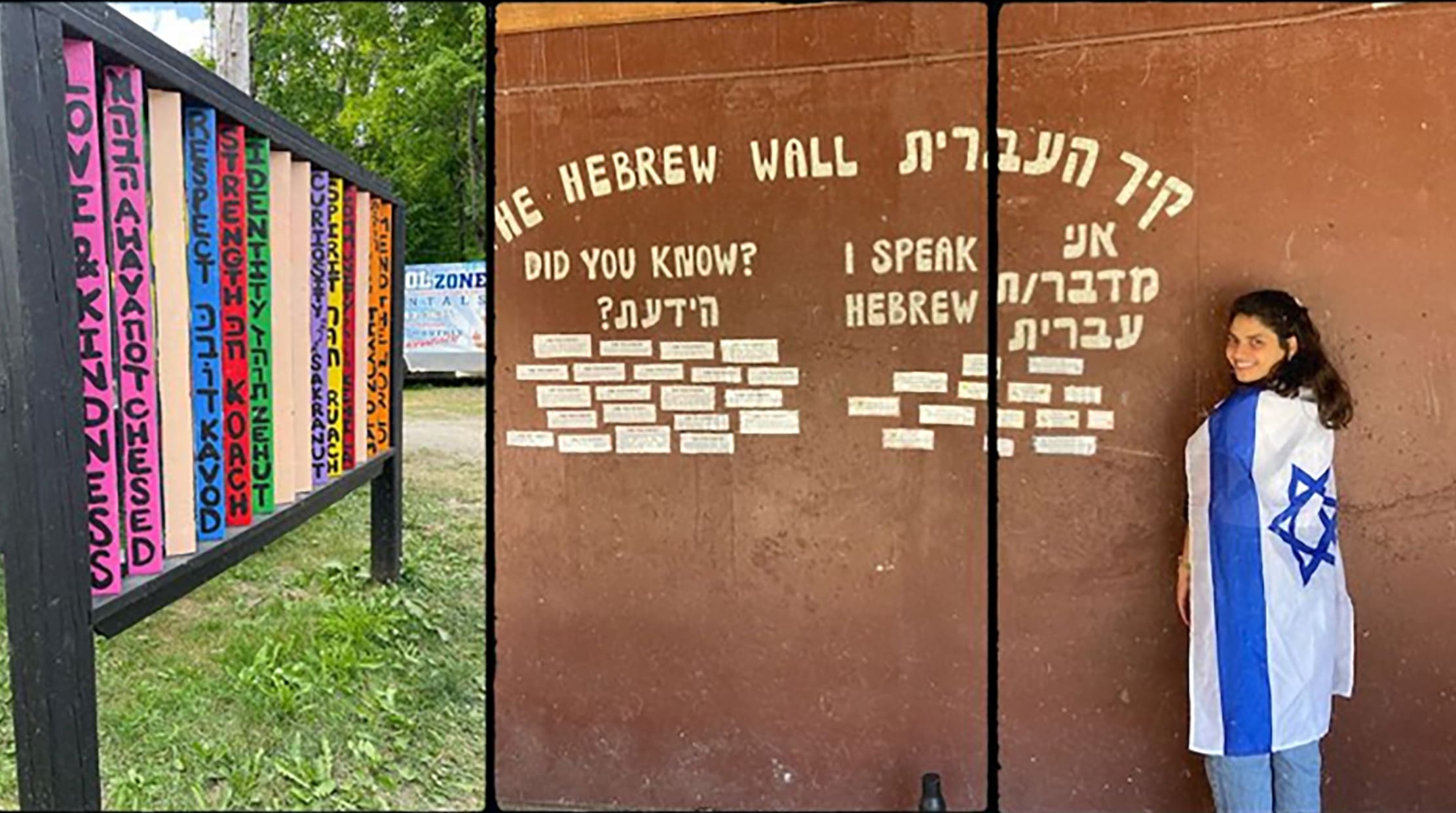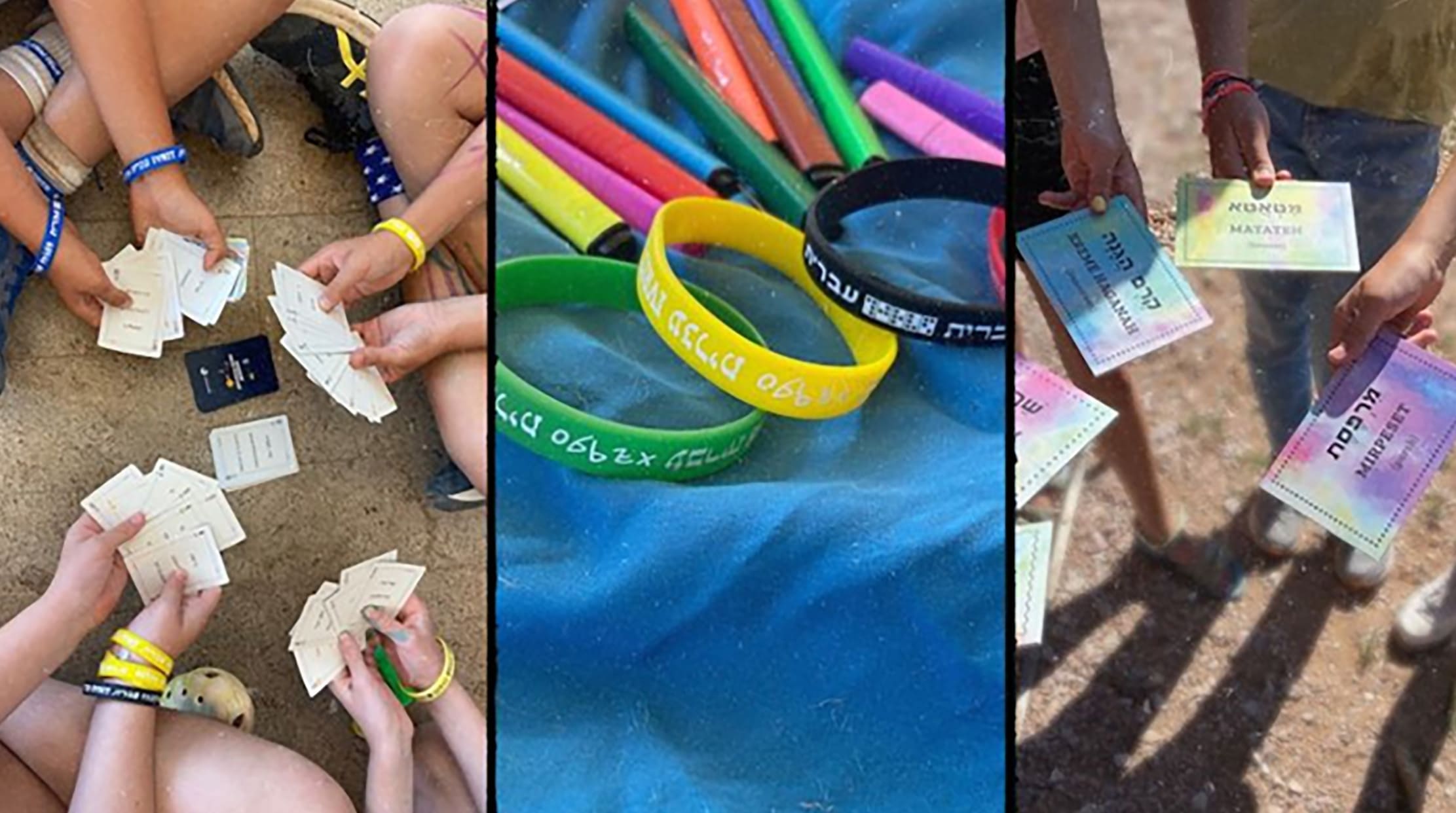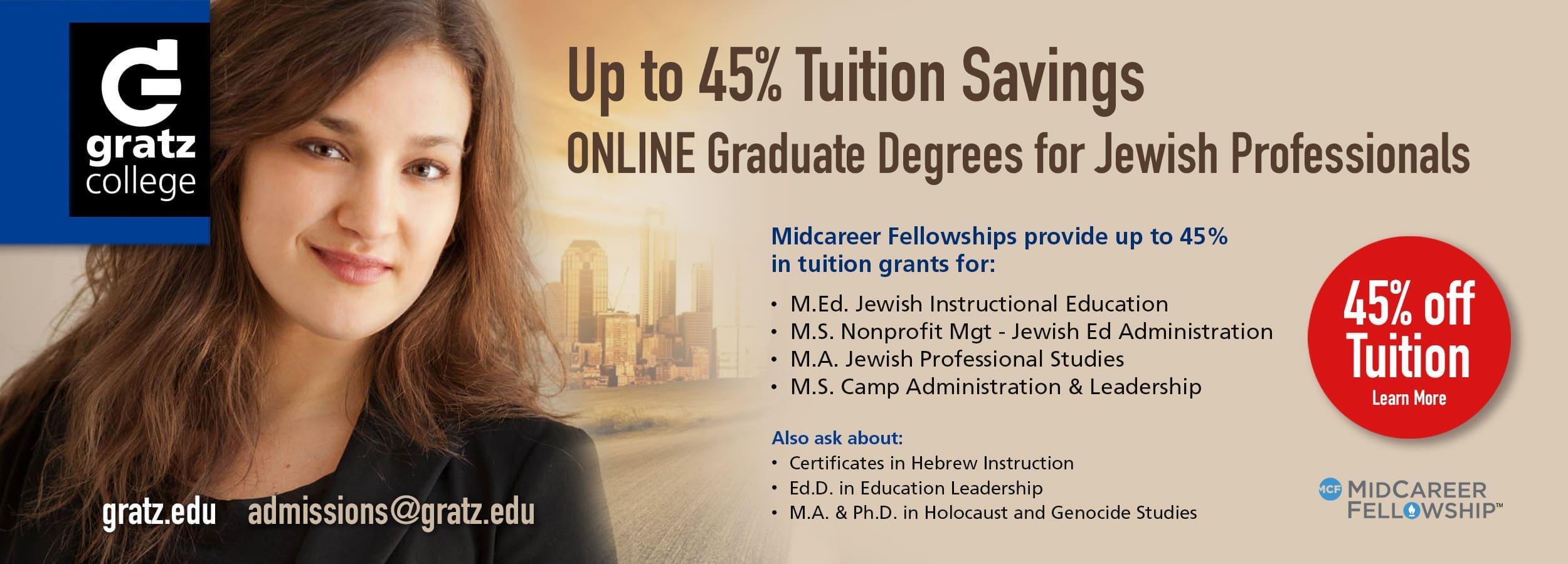From Hebrew Infusion to Acquisition: Unleashing the Power of the Hebrew Language

Andrew Ergas is the CEO of Hebrew at the Center and a doctoral student at the Davidson School of Education at the Jewish Theological Seminary. Rabbi Ergas has worked in the field of Jewish education for close to three decades in both Israel and North America, having served as a camp director, Israel experience educator, a day school head, and an executive director of a JCC.
When Charles Dickens, a somewhat repentant purveyor of antisemitic tropes, opens A Tale of Two Cities with “It was the best of times, it was the worst of times,” he might be describing the contemporary Jewish experience. In every generation, our people confront new opportunities, but also new and historic challenges. Today is no different. With a rise in antisemitism, many young people are choosing to move towards the exit of the Jewish community, and the growing gaps between both Jews of different orientations and between the two largest Jewish communities, Israel and North America, are of critical concern. As more Jews begin to define themselves as “Just Jewish,” “Culturally Jewish,” or consider removing “Jewish” from their identities, we must unlock strategies and interventions that creatively weave both the old and the new in ways that engage, inspire, and connect.
An underutilized but potent tool in our arsenal, Hebrew is instantly recognizable as Jewish, but often experienced by too many Jews as a foreign language rather than as an inherent element of Jewish identity and the core of an engaging sociolinguistic community. Whether seen inscribed on a tombstone in a European cemetery or spelling out the name of a university on a college student’s t-shirt, this language is more than an instrument for communication. Hebrew is a framework for making meaning, for articulating deep values and culture, and a lens through which a people see and build its vision for the world. A shared inheritance, this language is the connector between Jews across theological and ideological differences and across geographic boundaries. Hebrew was used by our ancestors in ancient times, preserved across the Jewish journeys of the last two millennia, and is an access point into popular Israeli music, television, and cinema.
In responding to the challenges facing our community, and with a particular commitment to engaging young people as they form their own identities and generate pride in belonging to our people, Hebrew at the Center (HATC) expanded upon its historic work in second language acquisition training to develop a new pedagogy of Hebrew engagement that makes Hebrew fun, accessible, and relevant to young people who are not yet necessarily seeking to develop fluency.
Four “Baskets” of Learning and Experiencing
While summer shelihim, emissaries from Israel, have been introducing the “word of the day” to summer camps for years, and the Kayitz Kef immersion program has brought an intensive focus on developing Hebrew language acquisition to camps, it was understood that a new approach that sat somewhere between acquisition and random use of words that would be informed by language learning theories, understandings from the research on sociolinguistics, and an understanding of the Jewish summer camp setting was needed. Building on a white paper developed for the Jewish Agency by language scholars Sharon Avni (applied linguistics), Kate Menken (bilingual education), and Elana Shohamy (linguistic landscape), HATC’s new approach would take what was captured in the research done for the recently published, award-winning book Hebrew Infusion: Language and Community at American Jewish Summer Camps and reverse engineer educational and programmatic activities that might lead to increased use of Hebrew as a tool in camps.
This led to a pedagogy organized around four groupings or baskets of activities and experiences:
- The first category consists of Hebrew language activities, including new resources and materials that provide the learner with exposure to nouns, verbs, modifiers, and expressions in Modern Hebrew. The words and language units of Modern Hebrew found in these resources prioritize words that fall within the proximate zone of learning of young people involved in camp or other settings, providing access and exposure to words that have meaning in their day-to-day life. For example, rather than teaching a “word of the day” such as mastic, the Hebrew for chewing gum that is often not even allowed at a camp, nouns and verbs common to camp life are used across multiple programs to introduce and reinforce a working vocabulary of Hebrew. From decks of cards titled “deck-tionary” that create opportunities for the learners to play with Hebrew to games and activities, we provide exposure to useable language that can then become a part of the shared language of Jewish camp. This approach encourages exposure and use of Hebrew on an ongoing basis that relate to the surrounding context and enable even the non-Hebrew speaking counselors and specialists to add a Hebrew dimension to their general efforts of building Jewish community.
- The second basket focuses on both Israeli and Hebrew culture, providing exposure to the ways in which Hebrew is experienced through popular music and media, the use of Hebrew within the visual arts, and the relationship between Jewish living Hebrew from the prayerbook or Jewish holidays and Modern Hebrew. Both the materials that were collected and curated and the special training the Hebrew Fellows (described below) received leveraged the shelihim’s interest in sharing popular Israeli culture with an additional layer of sensitivity to language learning. This included selecting materials that had words and language units that could be easily connected to the camp setting and the community’s working vocabulary. The activities that helped uncover links between siddur or Jewish living words and Modern Hebrew sought to connect the extant Hebrew that many campers and staff brought to camp to raise awareness of the meaning of words many know but might not be able to translate. For example, the word tov, or “good” in Hebrew, could link the daily greeting of boker tov, the post-Havdalah shavua tov, the commonly known phrase mazal tov, and even parts of the blessing after meals recited at many of these camps.
- Linguistic landscape, the ways in which languages are seen, heard, and experienced in a sensory manner, informs the third group of materials and activities. These include playlists to help create mood, posters to support both passive and active education, and produced materials such as labels that can highlight Hebrew in the camp or classroom or stickers that can embellish a young person’s water bottle with Hebrew. Part of this basket of activities includes discussions with camp personnel about when they choose to create formal signage for camp and whether it includes actual Hebrew or just transliterated Hebrew, whether that Hebrew is in a print font or a different font, and the integration of Hebrew, transliteration, and translation. Camps also did an audit of their digital and print materials to see whether or not Hebrew was being used to signal the Jewish nature of the camp, and whether or not they were normalizing Hebrew in these public-facing materials.
- The final category within this new pedagogy includes opportunities and activities that support metalinguistic discussion about the role Hebrew plays in both the individual and the community, encouraging participants to consider their own relationship to Hebrew and to begin to articulate a personal perspective on why Hebrew is important to them and to the community. As the pilot moved into the second year, each camp was asked to introduce the overall initiative with two structured activities during the staff orientation to both introduce the overall effort and the Fellows, and to begin to create opportunities for both the North American staff and the members of the shelihim team to normalize discussions about Hebrew and its meaning to each individual member of the camp community and to the overall orientation of the camp educational and Israel-engagement efforts.
Each of these pathways reinforce one another and provide a range of strategies to both increase exposure to Hebrew by program participants and move Hebrew from the periphery to a central component and value within the Jewish educational experience.
Piloting this Approach in Jewish Summer Camps
Jewish camping is recognized as one of the most powerful engines for community and identity building, a key element in the Jewish educational path that changes lives of both campers and staff. Camps were therefore selected as the first laboratory to test our new approach, leveraging both the presence of Hebrew found in almost every summer camp, whether as a central feature or on the margins, and the use of summer shelihim from the Jewish Agency as both deliverers of the approach and as Hebrew speakers and champions. Utilizing some of the core ideas surfaced from Hebrew Infusion, the descripted analysis of what the authors saw in a range of camps across North America, informed a more prescriptive approach that would bring a level of intentionality to the use of Hebrew in these camps. Rather than focusing exclusively on increasing the use of Hebrew, this pilot was guided by how Hebrew could advance the various camps’ Jewish educational goals, Israel engagement objectives, and a sense of what made each camp a special, Jewish setting for both campers and college-age staff members. Despite the challenges of COVID, financial limitations, visas and other bureaucratic barriers, and a culture of resistance to change found in many camps, the pilot engaged nine camps in the United States and ten camps in France in the summer of 2021, expanding to twenty camps in the United States and Canada and eighteen camps in France, Belgium, and Switzerland in the summer of 2022. These camps represented a wide range of theological and ideological perspectives—within North America, including camps from the Conservative and Reform streams, Young Judaea and B’nai B’rith movements, and JCC and independent camps. Each of the camps was provided with training and materials, an Amit Ivrit, a Hebrew Fellow trained specifically in this approach and its methods, and a toolbox of activities.
Impact on the Jewish Identities of the Campers and Staff
During the summer, members of the initiative planning team conducted site visits to all of the camps that had COVID policies that allowed for outside visitors, followed by post-summer interviews with a range of stakeholders from each camp to best understand the impact on the members of the camp community. In many of the camps, we either observed or heard of increased usage of Hebrew by many of the campers, with the Hebrew Fellow serving as a focal point for Hebrew language engagement. In some of the camps, the use of key Hebrew phrases at meals and other group gatherings became more commonplace, with at least a few camps creating spirited moments on a daily basis as a Hebrew word or term was introduced or reinforced. Many camps created physical locations that highlighted Hebrew, including Hebrew word walls, new signage, or extensive labeling of items from the various vegetables in the salad bar to adding Hebrew signs to existing camp buildings or unit areas. The distribution of colored bracelets that highlighted a range of different fonts used for writing the word Ivrit, Hebrew, were used in various camps’ Maccabiah or color war programs or served as a reward for campers using Hebrew in their daily conversation. As important as the impact on campers, the college-age staff were an important target audience for this initiative, with younger staff seeking out more Hebrew learning to help them get ready for a gap year or college program in Israel. In one camp, the directors reported a significant uptick in the interest of their oldest campers in joining the camp-run summer trip to Israel. While there were other contributing factors, they reported that the increased Hebrew, delivered in fun, joyful, but thoughtful ways, led these young people to want to visit Israel, where they could be exposed to more Hebrew and begin using the words and phrases they had internalized as a part of camp culture. Given the ways in which camp culture is experienced as an important part of camper and staff Jewish identities, we believe this initiative contributes a Hebrew component to those identities, making these individuals more comfortable both with and within the language of the Jewish people.
Lessons Learned and Applied
Key lessons that emerged from these two summers included the need for this type of cultural change effort to be owned in a partnership consisting of the trained Hebrew Fellow, a key camp leader with an understanding of local culture and context, the top professional leadership of the camp, and HATC. The toolbox that was initially designed to be used in a wide range of settings and with different aged campers and staff was too much for certain Hebrew Fellows; it became clear that more pre-summer curation was required to determine a more select use of the various activities to match well with the specific goals and settings of each camp. While summer shelihim are an important and exciting part of Jewish summer camps, it became clear that for this type of shift in thinking, other staffing options make more sense for certain camps who want to draw on an already established Hebrew educator in the community, whether a long-term shaliah or a day-school educator with an understanding of informal education and camp culture. Finally, survey data, focus groups, and individual conversations with key stakeholders reinforced the initial premise that with the right approach, Hebrew can play a meaningful role in enhancing the Jewish experience in a summer camp setting that brings joy and fun to Jewish learning, creates new pathways into the Hebrew language, and inspires both campers and staff to want to pursue a deeper encounter with Hebrew, Israel, and Jewish culture.
Moving to the Year-Round Settings
In addition to now looking to expand this effort to many more camps, the successes of the summer have inspired philanthropic support to enable bringing this new approach to year-round settings such as congregations, JCCs, youth service organizations, and day schools to support Hebrew engagement outside of the Hebrew language classroom. HATC is working with small groups of expert educators from each of these settings to translate the materials that were developed for the camp setting to these new environments, taking into account the fact that these frameworks do not have the advantage of the immersive experience of a few weeks or months at camp. The materials for congregations will continue to expose learners to Modern Hebrew but also expand to include materials connected to prayerbook Hebrew and Jewish living words. The materials for youth service organizations will focus more on teens and their vocabulary and experience, with the activities informed by what is age appropriate for adolescents moving towards young adulthood. In the day school setting, transliteration will be removed from many of the tools, with a focus on complimenting the Hebrew language acquisition efforts taking place in the Hebrew department. However, the broad goals will remain the same, providing a framework that unleashes the potential of Hebrew to create personal and communal bridges to values, meaning, and the global Jewish community.
Looking to the Future
In the moments where we find ourselves with both tremendous challenges and promising opportunities, the ability to change the future requires that we take those steps that will tilt the balance towards the promise of a future of strength. This new pedagogic approach provides tools that can be used by many to strengthen Jewish life and support Hebrew as a normative and powerful component of Jewish identity. The development, testing, and expansion of new ways to bring Hebrew closer to learners and learners closer to Hebrew can also serve as a pathway for other innovations in Jewish education. We are ultimately an optimistic people who have transcended great challenges in the past; together, we can build pathways to Jewish commitment and pride, inspired by ahdut/unity, tikvah/hope, and Ivrit/Hebrew.



Andrew Ergas is the CEO of Hebrew at the Center and a doctoral student at the Davidson School of Education at the Jewish Theological Seminary. Rabbi Ergas has worked in the field of Jewish education for close to three decades in both Israel and North America, having served as a camp director, Israel experience educator, a day school head, and an executive director of a JCC.
Reach 10,000 Jewish educational professionals. Advertise in the upcoming issue of Jewish Educational Leadership.








